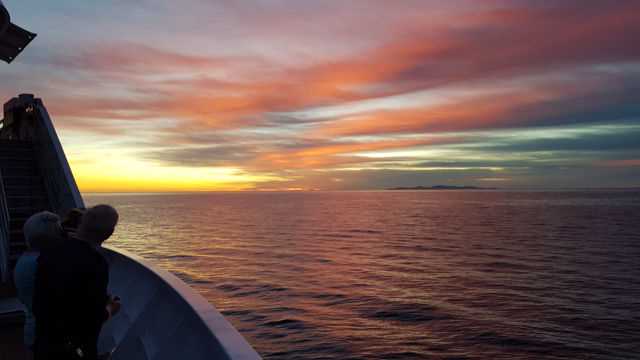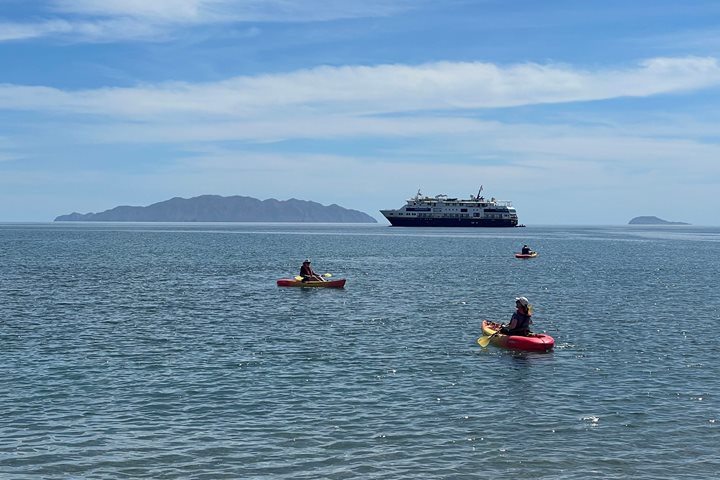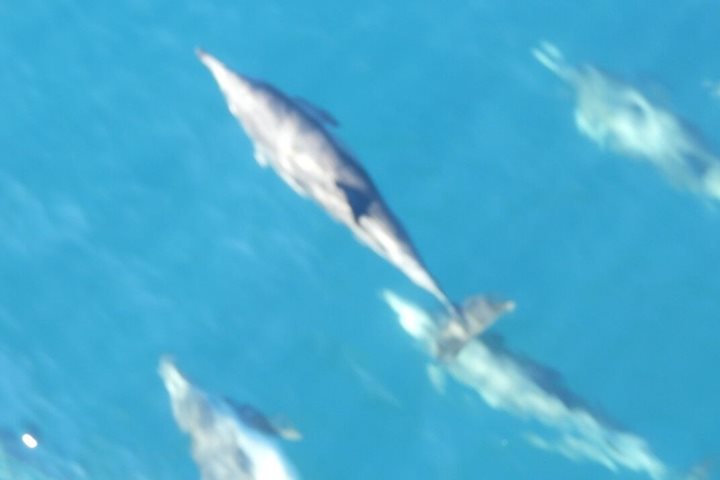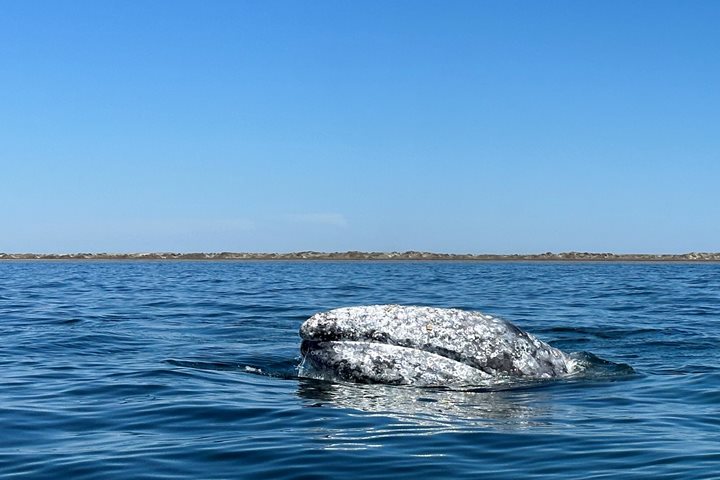Expeditions are defined by moments.
There are the grand moments, such as spotting two blue whales surfacing south of Loreto some 15 hours after embarking on our voyage. The massive 30-foot geysers of water spraying into the air, the mottled gray-turned-cerulean skin beneath the surface, marked the first blue whales for many people aboard National Geographic Venture, and the first sighting of blue whale flukes for many more – including me. Two members of the largest animal species to have ever graced the planet had turned up personally to greet us in the warm Baja morning.
There are moments at twilight where a thickly covered curtain of gray clouds suddenly explodes into life, when the sun crescendos in a display of colors so brilliant there aren’t words to describe the hues. When, for a brief time, you stand agape as the world turns towards or away from our nearest star, a ritual since time immemorial, and feel a part of that turning – forgetting everything else.
As in life, we remember the grand moments, the monumental occasions. What we can’t neglect is the importance of the tiny moments that fall in-between.
Searching in tidepools for life on a crescent-shaped desert island. The urchins arrayed like so many black pincushions, nestled comfortably amidst the rocks. The darting, iridescent purple fish, and the brilliant uniform of a dead spiny lobster washed up onto the shore.
The gulls berating us for interrupting their naps. Cardon cactuses waving from the clifftops. A rump-wiggling greeting from an expat’s red heeler at our beach landing.
The little moments populate our daily lives, on expeditions as well as at home, with a quiet sincerity that often gets overlooked. They don’t demand attention, and they may not necessarily imprint on our memories. Yet if we pause to notice them, we become more attuned to how incredible each moment can be.
As Albert Einstein said there are only two ways to live your life.
One is as though nothing is a miracle. The other is as though everything is a miracle.







